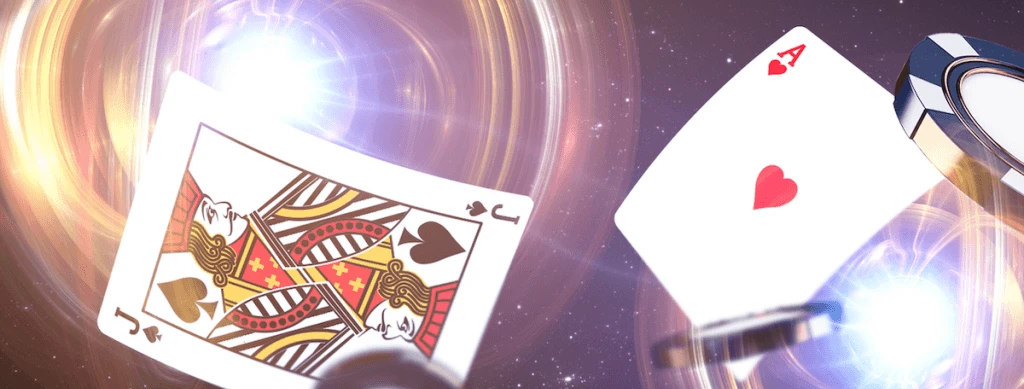
How To Use Quantum Entanglement as a Blackjack Strategy

Blackjack players can get very creative when it comes to gaining an edge. Even the most basic player needs to use strategy to a more or less conscious level. We all watch the game using basic math, and there are at least a dozen of systems for card counting. The most passionate players can master very complex strategies of card counting, using complicated systems in order to reach the highest level of accuracy.
But there could be a new strategy in town, and not of the simplest kind: quantum entanglement.
If you have never heard of it, worry not. Quantum entanglement sounds very complicated, and that’s because it is. But it has been proven to be applicable to blackjack! Who do we have to thank for this? Researchers at the Massachusetts Institute of Technology and Caltech, also known as the world’s leading inquirers into beating the house at blackjack.
Academic researchers winning on the house is not new. Actually, the MIT blackjack team —usually in a joint team with PhD students from Harvard and Caltech– has been developing ways to beat the house since 1979. Their most famous contribution was a team-based strategy that perfected the well-known strategy of card counting. Covertly communicating with each other, the researchers could estimate the cards remaining in the deck and this allowed them to gain an edge over the dealer. This ground-breaking piece of research inspired the book “Bringing Down the House” and even a few Hollywood movies. Does this mean you’d need the brain of an academic and the face of an actor in order to make it work? Let’s hope not!
Quantum entanglement is the new target of choice for the joint MIT and Caltech team. So, what is it? And how can laymen who do not pursue PhDs in quantum physics make it work for their own blackjack game? We will answer all these questions in the following article. Make sure you’re well acquainted with the basic principles and rules of blackjack being delving further, because this is about to get a little technical.
What Exactly is Quantum Entanglement?
Quantum entanglement is related to quantum mechanics – a subset of quantum physics. The term designates an entanglement, or “correlation” between two separate objects which is not only attributable to the “classical laws of physics and probability.”
Quantum entanglement therefore implies that two separate objects or particle have a simultaneous impact on each other. This discovery was nothing short of a revolutionary idea in physics, which could possibly imply that two entangled particles could immediately communicate their state with another, no matter their situation in the universe. The idea of a quantum entanglement between particles was first shown in a 1964 experiment by and has fascinated researchers, as well as Hollywood, ever since.
But how can this possibly be linked to blackjack?
The researchers from MIT and Caltech know that the cards dealt are correlated: as they were playing with one deck, there was only one card of each kind.

How is Quantum Entanglement Linked to Blackjack?
In their paper “Quantum Blackjack – or- Can MIT Bring Down the House Again”, the researchers compared three strategies to beat the house. In each scenario, the two players –Alice and Bob– worked as a team. In the first one, Alice and Bob used the traditional technique of counting cards. In the second one, Alice showed Bob her card, which was beneficial to Bob. In the third strategy, they used a quantum system –that is, a system determined by their quantic computational device— in order to figure out whether to hit or stand.
In addition to this output, the quantum system gave Bob information about Alice’s card from the quantum system.
In the results of the experiments, we can see that this entangled system gave Alice and Bob a slight advantage over other strategies, but only when there were only a few cards remaining in the deck. Therefore, using quantum entanglement as a strategy to place bets in blackjack is a better strategy than most of the ones we already know, the mainstream ones. However, there might be some material obstacles in applying the strategy of the study on a large scale.
While quantum physics could theoretically help blackjack players win a small edge over the house, there are practical issues that jeopardize its possible use in a casino. The main one being the need for a quantum computer, which requires tremendous amounts of money, space, cooling facilities, and therefore electrical power. At this point, there are roughly 15 quantum “computers” in the world, all of which are used by universities or massive tech companies like IBM. Researcher and physics professor Joseph Formaggio, one of the authors of the study, remarked that “carrying a quantum computer in your backpack will probably tip the house,” therefore concluding that “casinos are safe for now”.
In conclusion, the MIT’s research into blackjack strategies using quantum computer is fun because blackjack is enjoyable, and their results are conclusive. However, being hardly applicable in real life, it is at this point impossible for people like you and I to walk into a casino and use quantum entanglement in order to place better bets. This doesn’t mean that you can’t enjoy the game. You can head here to find a good blackjack table before finding a quantum computer that fits in your living room and in your wallet!


Author
Content Writer